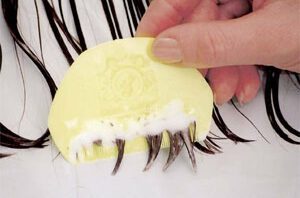Contact:
Paul Towers, Pesticide Action Network
916-216-1082, ptowers@panna.org
November 28, 2012
FDA Fails to Ban Neurotoxic Lindane
Agency ignores science, fails to pull pesticide used in children’s shampoos and lotions
Washington, DC – Ten years after California enacted a ban of lindane in pharmaceutical products, the Food and Drug Administration (FDA) announced yesterday that it will allow the continued use of the neurotoxic pesticide in shampoos and lotions used predominantly on children.
“FDA put children’s health second by failing to ban lindane,” said Medha Chandra, PhD, International Campaign Coordinator at Pesticide Action Network. “The announcement marks the triumph of pesticide industry pressure over science, and fails to put safer products on our shelves.”
Lindane, a persistent pesticide once extensively used worldwide, was withdrawn for agricultural uses in the U.S. in 2006, and targeted for global phaseout under an international treaty by more than 160 nations in 2009. However, due to aggressive lobbying by Morton Grove, the main distributor of lindane pharmaceutical products in the U.S., the chemical has remained in lice and scabies products in this country.
Morton Grove sells the lice product Lindane Shampoo (commonly referred to by its previously trademarked name “Kwell”) as well as Lindane Lotion to treat scabies. Since 2007, the company has been owned by Wockhardt Limited, headquartered in India – one of the only remaining countries to manufacturer lindane as an active ingredient.
California was the first and only state to successfully ban pharmaceutical uses of the pesticide in 2001. Mexico has also phased out all uses, as have many other countries.
Earlier this summer, Representative Edward J. Markey (D-MA) sent a letter to FDA urging immediate action on the chemical. Two years earlier, 10 environmental organizations, including Pesticide Action Network, requested the same.
“Increasingly pesticides like lindane, even in very small amounts, are linked to a wide range of adverse impacts on children’s health,” said Mark Miller, MD, MPH, director of the UCSF Pediatric Environmental Health Specialty Unit. “The options for lice and scabies control shouldn’t include this neurotoxic pesticide.”
Lindane has significant effects on human health – particularly children – and is not recommended by the Centers for Disease Control. According to the Agency for Toxic Substances and Disease Registry, exposure to high levels of lindane can cause seizures, convulsions and abnormal EEG patterns. California also lists lindane as a Proposition 65 chemical known to cause cancer.
The evidence against the chemical has only grown in recent years. Dr. Miller’s research previously found that California’s successful ban on lindane resulted in cleaner water, healthier children, with viable alternatives for controlling lice and scabies outbreaks. And several studies ranked lindane as one of the least effective lice control agents available. One set of university researchers in Belgium found that lindane was “not sufficiently effective to justify its use.”
"We can't remove every potentially harmful chemical exposure from a child's life, making it imperative to remove those that we can," said Deborah Altschuler, president and co-founder of the National Pediculosis Association. The NPA first testified against lindane at FDA hearings in 1983 and 1984, and developed an online resource center at headlice.org.
Many health care professionals already use a wide range of alternatives to lindane including combing tools specially designed to remove lice and nits, as well as essential oils and extracts to treat scabies.
###







